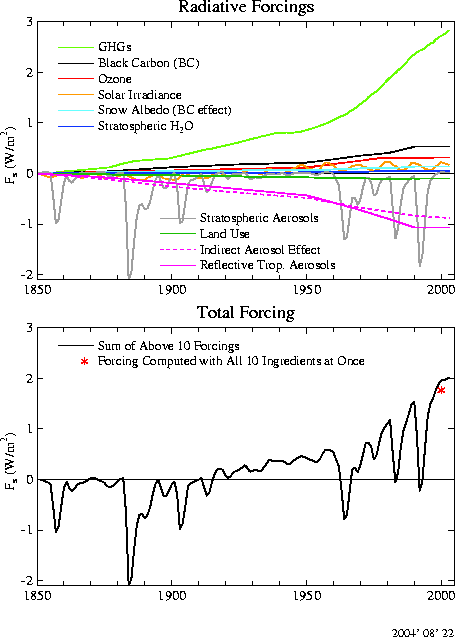Urederra
Mostly harmless
The CO2 levels are nothing compared to the Cambrian era.
From http://www.palaeos.com/Paleozoic/Ordovician/Ordovician.htm#climate
A major transgression in the Middle Ordovician created widespread shallow, warm epicontinental seas. Thus, most of the Ordovician was favorable for marine life, particularly around the well-studied European and North American cratons. However, the Ordovician ended in a brief (300-500 ky), but severe, ice age. Gondwana, particularly Africa, straddled the South Pole and became extensively glaciated. There were even glaciers in what is now the Sahara. Metazoans were severely effected. About 60% of animal genera became extinct, making this the second or third most deadly mass extinction of the Phanerozoic [1]. As a natural consequence, a good deal of attention has been focused on the causes of the Ordovician Ice Age. In fact, it is not easy to see how an ice age could have occurred. Atmospheric carbon dioxide levels are believed to have been 8 to 20 times their current values. This ought to have prevented anything approaching an ice age. Sea levels were high through most of the Ordovician. They dropped, dramatically (about 50 m), in connection with the ice age, but it is hard to tell whether this was cause, effect, or both.
... 8 to 20 times their current values...
Who took the blame for that?
From http://www.palaeos.com/Paleozoic/Ordovician/Ordovician.htm#climate
A major transgression in the Middle Ordovician created widespread shallow, warm epicontinental seas. Thus, most of the Ordovician was favorable for marine life, particularly around the well-studied European and North American cratons. However, the Ordovician ended in a brief (300-500 ky), but severe, ice age. Gondwana, particularly Africa, straddled the South Pole and became extensively glaciated. There were even glaciers in what is now the Sahara. Metazoans were severely effected. About 60% of animal genera became extinct, making this the second or third most deadly mass extinction of the Phanerozoic [1]. As a natural consequence, a good deal of attention has been focused on the causes of the Ordovician Ice Age. In fact, it is not easy to see how an ice age could have occurred. Atmospheric carbon dioxide levels are believed to have been 8 to 20 times their current values. This ought to have prevented anything approaching an ice age. Sea levels were high through most of the Ordovician. They dropped, dramatically (about 50 m), in connection with the ice age, but it is hard to tell whether this was cause, effect, or both.
... 8 to 20 times their current values...
Who took the blame for that?


 ... so, you are admitting that there are other factors appart from CO2? that´s even sweeter. which ones? And what is the importance (in percentage) of human produced CO2 levels in climate? And which are the error bars for those percentages?
... so, you are admitting that there are other factors appart from CO2? that´s even sweeter. which ones? And what is the importance (in percentage) of human produced CO2 levels in climate? And which are the error bars for those percentages? 







